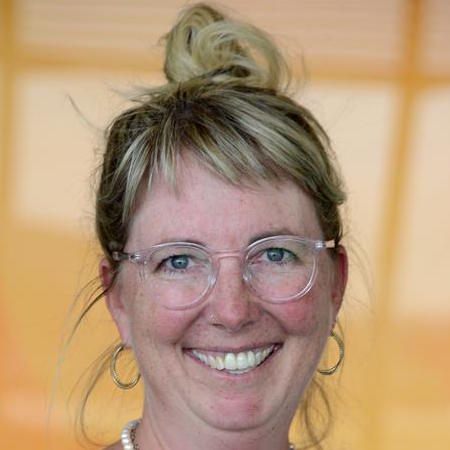As a former dancer and dance instructor, CU Cancer Center member Jennifer Raybin, PhD, knows the power the creative arts hold to help people through challenging times. As a nurse practitioner who led the Palliative Care Program at Children’s Hospital Colorado, she knows the creative arts can be especially helpful for children and young adults with cancer. Creative activities help patients deal with symptoms, improve their mood, and even ease disease and treatment symptoms like pain, nausea, and fatigue.
“When I got my master’s at Yale, I explored dance movement therapy for adolescents with cancer,” Raybin says. “My lifelong dream has been to blend art and science, and to show the scientists that art makes you feel better.”
Raybin took a step closer to that dream this month with the publication of her study “Quality of Life Outcomes with Creative Arts Therapy in Children with Cancer” in the Journal of Pediatric Oncology Nursing. In partnership with Patricia Mowry, licensed dance/movement therapist in the Ponzio Creative Arts Therapy Program at Children’s Colorado, Raybin implemented her study with patients. Raybin applied scientific investigation to the creative arts therapy (CAT) conducted by Mowry.
Raybin looked at how participation in creative arts therapy improved quality of life for cancer patients ranging in age from 3 to 17. During their treatment, patients worked directly with Mowry, who applied individualized interventions designed to help patients express and process emotions. These included making cloth mini-me dolls, repurposing radiation masks into art, creating playful movement using props such as balls, scarves, and a parachute as in-the-moment adaptation to loss of physical functioning, and applying yoga breathing exercises to control pain.
Valuing the mind-body connection
Raybin enrolled 98 children and their parents in the study. Eighteen patients received no creative arts therapy, 32 received a low dose of CAT, and 33 received a high dose. Children who experienced CAT — and the parents who observed their children — reported significantly better quality of life. Additionally, Mowry observed that patients’ posture seemed to change several times during the course of their treatment, reflecting their changing mood and sense of self. Raybin’s objective study proved this hypothesis to be true.
“We looked in the physical therapy literature and found a posture measure,” Raybin says. “We looked at the kids’ posture over time. At first, I thought, ‘For sure this won't turn out to be significant.’ And lo and behold, it did. It is related to quality of life. We compared that posture measure to surveys, and the kids that were more hunched over also had worse quality of life and chose a sadder face on the Faces scale.”
The study’s results — that creative arts therapy results in a better quality of life for young cancer patients — is especially important as pediatric cancer is the leading cause of death from disease in children in the U.S. In 2022, it is estimated that 10,470 children and adolescents ages 0 to 19 will be diagnosed with cancer, and 1,050 will die of the disease.
“I am really passionate about not just throwing medicines at these kids,” Raybin says. “They are so tired of taking medication for their symptoms. It’s important to think about the mind-body connection and any kind of integrative and complementary therapies we could add that can help them process the physical and psychological syptoms.”
Studying the results
Creative Arts Therapy, which is conducted by a trained therapist who in this case is also a licensed professional counselor, is greatly different than personal art making, dancing or music making. Those activities have also been associated with improved quality of life, but they are not guided by a trained clinician. Creative arts therapists assess patients’ psychological needs and intentionally apply interventions.
For the next phase of her research, Raybin hopes to do a multi-site study of creative arts therapy programs, aiming to prove their value so that they become a more standard part of care for young cancer patients.
“A lot of places have art therapy, but it's almost always philanthropically funded,” she says. “My dream is that it would be paid for by insurance, that we could say, ‘You should pay for this as much as you should pay for chemo.’
“Curing cancer isn’t enough,” she add. “Creative arts therapy helps patients negotiate the physical and psychological issues surrounding serious illness, while providing an enjoyable aspect to otherwise difficult treatment.”




